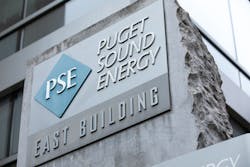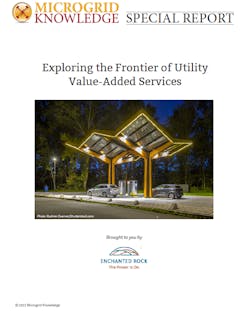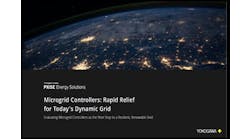Puget Sound Energy and the clean energy transition in Washington State
In a new special report article series, we explore value-added services offered by six leading US utilities. In this article, we look at how Puget Sound Energy is driving the clean energy transition in Washington State.
Download the full report.
Most utilities offer programs that are finely tuned to address a narrowly defined opportunity: EV charging infrastructure, demand response, battery storage, electrification of commercial equipment.
Puget Sound Energy (PSE), on the other hand, is coordinating value-added services for customers across a broad suite of opportunities, thanks to holistic planning to meet the goals of its Beyond Net Zero Carbon by 2045 pledge.
That pledge committed PSE to reaching net-zero carbon emissions from its electric and gas operations and electric supply by 2030, then going further to reach net-zero carbon emissions from the customer use of gas sold to homes and businesses by 2045 and to advocate for cost- effective actions to reduce carbon across Washington.
The commitment was just Step 1. Step 2 is the utility’s first Clean Energy Implementation Plan (CEIP), which is a four-year action plan for 2022-25 to advance toward the Beyond Net Zero Carbon commitments. The plan is undergoing a formal review process with the Washington Utilities and Transportation Commission.
Within the CEIP is a potential windfall of opportunities for PSE customers, all connected by the shared benefits of carbon-free energy. The current draft of the CEIP details top-level targets across three primary categories:
- Energy efficiency: 1,073,434 MWh saved from 2022-25 through ongoing programs that are expanded to incorporate a broader vision of customer benefits, including comfort, health, accessibility and affordability.
- Demand response: 23.7 MW of demand response capacity by 2025, achieved through new programs that allow PSE to partner with customers on flexible ways to shift or reduce their electricity use during peak times.
- Renewable energy: 63% of retail electric sales delivered through renewable energy by 2025, including sub-targets of 80 MW of new distributed solar and 25 MW of new distributed battery storage through programs that maximize local peak demand reduction and resilience benefits.
While PSE’s energy efficiency programs are ongoing, the utility expects to conduct a targeted DER request for proposals and begin tariff filings for its DER programs in 2022 and commence its demand response programs in 2023.
Going beyond the conventional least-cost and reliability tests, the utility is seeking to ensure the clean energy transition is equitable. PSE engaged stakeholders on the customer benefits they desire. The process allowed PSE to propose clear customer benefit indicators in the areas of public health, energy security, risk reduction, environmental improvement, cost reduction and resiliency. PSE also outlined three customer benefit indicators specifically for “highly impacted communities and vulnerable populations:” improved participation in clean energy programs, reduction of burdens, and non-energy benefits such as new jobs and improved home comfort.
Those customer benefit indicators will serve as a guiding force for the design of the utility’s energy efficiency, demand response and DER programs.
As a four-year plan set to guide actions through 2025, this CEIP is just the first as PSE seeks to reach its 2030 net-zero goals. That means the company’s planned actions and programs will continue to expand and evolve as it navigates the clean energy transition with its customers.
PSE hopes to target emerging customer interests to advance its clean energy goals. PSE Director of New Product Development Will Einstein said the utility has more than 10,000 customers with residential solar systems today, many who also have EVs, thinking about installing energy storage and smart thermostats. These customers, he said, are increasingly looking for value- added services to manage their energy use, and PSE’s CEIP gives the utility a way to develop relationships with customers and programs that will help them achieve their energy goals.
Conclusion
To recap our article series, value-added services utilities offer today include support and incentives for:
- Electrification, ranging from support for electric vehicle charging infrastructure to rebates for EVs, air source heat pumps, and electrified commercial and industrial equipment.
- Distributed energy resources, ranging from battery storage systems to rooftop solar and more.
- New approaches to reduce, shift and control electricity use at key times, including demand response, flexible demand, and energy efficiency programs.
- Resiliency solutions such as microgrids
Enchanted Rock’s utility leader survey results demonstrate that there is broad interest across the industry in launching programs to provide customers new value-added services. However, as the in-depth interviews with program leaders at six utilities spread across the United States reveal, the focus can range from a sweeping set of services to those focused narrowly on a single goal like transportation electrification. Ambition levels also differ broadly, often determined by the support of policymakers and regulators.
Today, many programs are still in their infancy as pilots, but utilities launch pilots with the intention of scaling up successes. As utility strategies evolve to meet their new imperative to provide sustainable energy and hit aggressive decarbonization goals, customer programs providing value-added services in the areas of electrification, DERs, demand-side management and resiliency solutions will be an important arrow in the quiver.
Download the full report “Exploring the Frontier of Utility Value-Added Services,” courtesy of Enchanted Rock to learn more.









